If you see Folder Access Denied, You require permission to make changes to this folder error message while deleting the file(s) located inside a particular folder, this article will help you. You may also encounter the same error message while copying or deleting the file(s) located inside a particular folder. This error usually occurs due to permission issues.
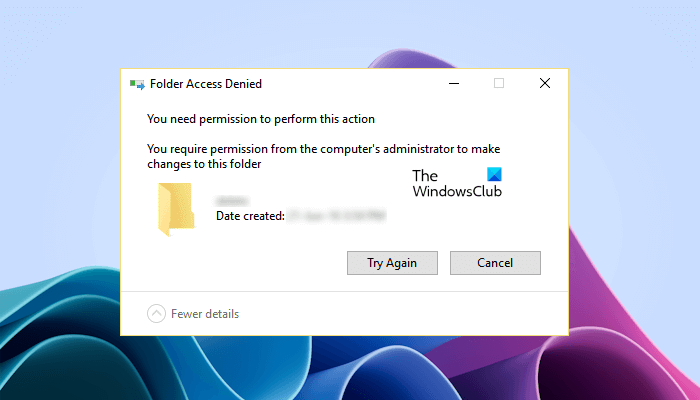
You may see different error messages preventing you from making changes to the file or folder, like:
You require permission from TrustedInstaller to make changes to this folder
You require permission from Everyone to make changes to this folder
You require permission from Administrators to make changes to this folder
You require permission to make changes to this folder
As explained above, this error usually occurs due to permission issues. But sometimes, antivirus software can also prevent you from deleting or modifying a file on your PC. Here, we will cover all possible solutions to fix this issue so that the error message “You require permission to make changes to this folder” could not prevent you from deleting or modifying the file(s) or folder(s).
In this article, you may also be required to change file or folder permissions or take ownership of the file or folder. Hence, if you are going to do these changes for files or folders located on your C drive, we suggest you create a System Restore Point before proceeding.
- Are you signed in to Windows with your Administrator account?
- Start your computer in Safe Mode
- Check file or folder permissions
- Take ownership of the file or folder
- Enable the hidden Administrator account
Let’s see all these fixes in detail.
1] Are you signed in to Windows with your Administrator account?
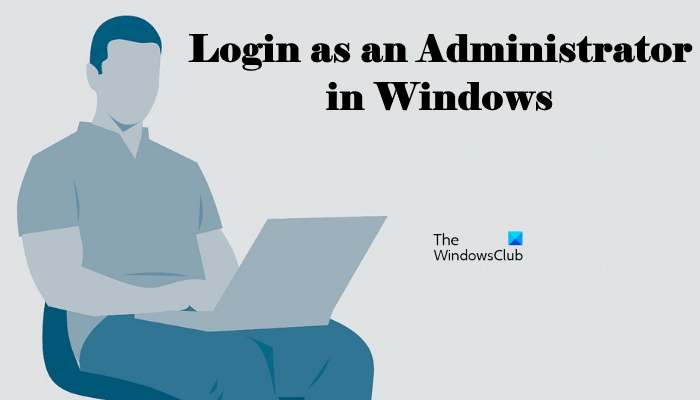
This is the most important thing that you should keep in mind. Permission issues can occur if you are signed in to your system with a Local account. If this is the case with you, sign in to your system with an Administrator account. After that, you will be able to delete or modify the file or folder without any problem.
Related: You do not have sufficient rights to perform this operation
2] Start your computer in Safe Mode
If despite signing in to Windows as an administrator, you cannot delete files or folders, try to delete them in Safe Mode. To start your system in Safe Mode, you have to use MSConfig.
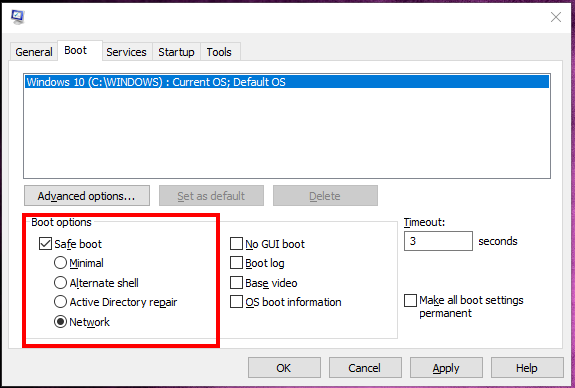
After entering Safe Mode, delete that file. You can also change the file or folder permissions in Safe Mode. Hence, Safe Mode is helpful not only to delete the files that do not delete in normal mode but also to change the file or folder permissions.
Related: It looks like you don’t have permission to view this file.
3] Check file or folder permissions
Check if you have required permissions to modify or delete the file. The following steps will help you:
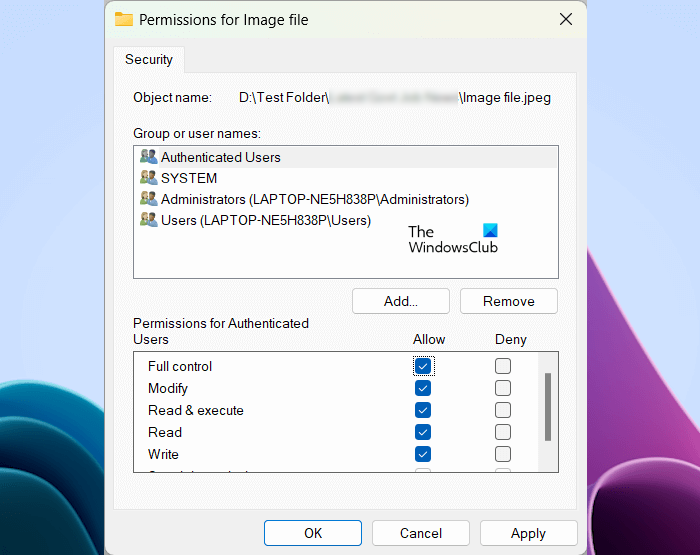
- Right-click on the required file or folder.
- Select Properties.
- Go to the Security tab.
- Select the user names one by one under the Group or user names box to view their permissions.
- The Modify, Read, and Write permissions should be allowed. If any permission is denied, click Edit.
- Now, select the user names and select the Full Control checkbox.
- Click Apply and then click OK.
Now, you should be able to delete or modify the file or folder.
4] Take ownership of the file or folder
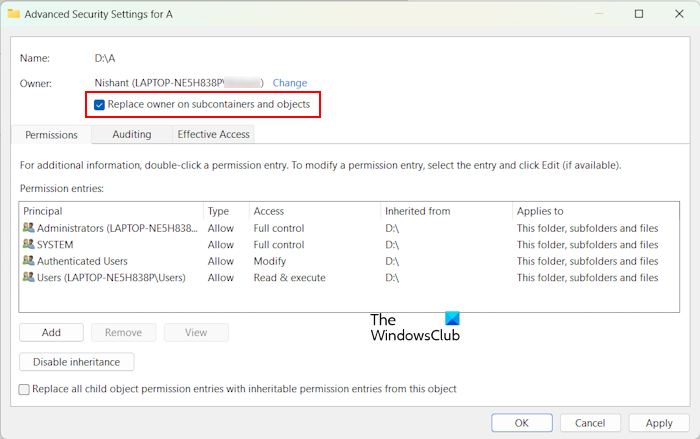
If none of the above solutions helped you, you have to take ownership of the required file or folder. If the folder that you want to move or delete contains subfolders, do not forget to select the Replace owners on subcontainers and objects checkbox. This action will grant you ownership of all subfolders.
Our Ultimate Windows Tweaker will let you add the Take Ownership of Files and Folders easily to Windows 11/10 context menu.
This should help.
Related: You don’t currently have permission to access this folder or file.
5] Enable the hidden Administrator account
Some users reported that they cannot change the file or folder permissions, or they cannot take ownership of the files and folders, even if they are signed in to their systems as an administrator. If this is the case with you, enabling the hidden Administrator account can help.
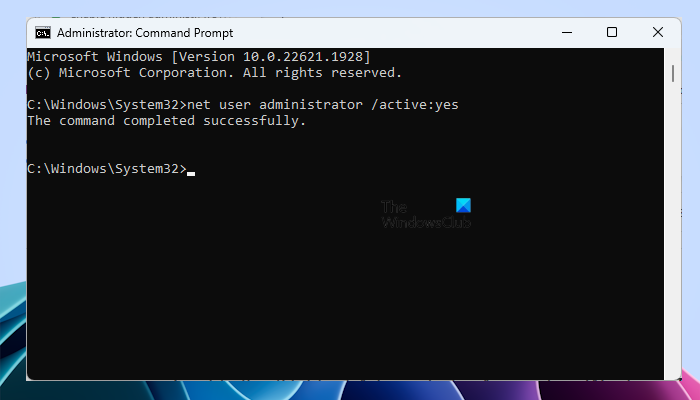
Windows 11/10 has a hidden Administrator account. Users can enable it to fix the problems occurring due to permissions issues. Enable the hidden Administrator account on your system and then sign in to your system with that account. This account does not require a password. We also do not suggest you set a password to this account. Instead of setting up a password for this account, you can disable it.
After signing in to the built-in hidden Administrator account, you will be able to take ownership of the file(s) or folder(s).
Read: You need permission to perform this action on Windows.
How do I delete a file that requires system permission?
If a file requires System permission to be deleted, you can change its permission to SYSTEM. If it does not work, you can take full control of that file by taking its ownership. To do so, you should be signed in to your system as an administrator. If you are experiencing issues in taking ownership, sign in to the built-in Administrator account to change ownership of that file.
How do I remove administrator permission from a file?
If a file has administrator permission and it is preventing you from modifying or deleting that file, you can remove the administrator permission by taking full ownership of that file. To do so, you need to sign in as an administrator.
That’s it. I hope this helps.
Read next: You’ll need to provide administrator permission to delete this folder.
Leave a Reply